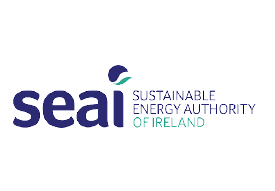
The Intergovernmental Panel on Climate Change – Sixth Assessment Report
The Intergovernmental Panel on Climate Change (IPCC) is the United Nations body for assessing the science related to climate change. The IPCC prepares comprehensive Assessment Reports about the state of scientific, technical and socio-economic knowledge on climate change, its impacts and future risks, and options for reducing the rate at which climate change is taking place. In this Sixth Assessment Report, Climate Change 2021: The Physical Science Basis, the report addresses the most up-to-date physical understanding of the climate system and climate change, bringing together the latest advances in climate science, and combining multiple lines of evidence from paleoclimate, observations, process understanding, and global and regional climate simulations.
The following provides Headline Statements from the Summary for Policymakers. For the full report, please click here.
Headline Statements from the Summary for Policymakers
A. The Current State of the Climate
A.1 It is unequivocal that human influence has warmed the atmosphere, ocean and land.
Widespread and rapid changes in the atmosphere, ocean, cryosphere and biosphere have
occurred.
A.2 The scale of recent changes across the climate system as a whole and the present state
of many aspects of the climate system are unprecedented over many centuries to many
thousands of years.
A.3 Human-induced climate change is already affecting many weather and climate extremes in
every region across the globe. Evidence of observed changes in extremes such as
heatwaves, heavy precipitation, droughts, and tropical cyclones, and, in particular, their
attribution to human influence, has strengthened since the Fifth Assessment Report (AR5).
A.4 Improved knowledge of climate processes, paleoclimate evidence and the response of the
climate system to increasing radiative forcing gives a best estimate of equilibrium climate
sensitivity of 3°C, with a narrower range compared to AR5.
B. Possible Climate Futures
B.1 Global surface temperature will continue to increase until at least the mid-century under all
emissions scenarios considered. Global warming of 1.5°C and 2°C will be exceeded
during the 21st century unless deep reductions in carbon dioxide (CO2) and other
greenhouse gas emissions occur in the coming decades.
B.2 Many changes in the climate system become larger in direct relation to increasing global
warming. They include increases in the frequency and intensity of hot extremes, marine
heatwaves, and heavy precipitation, agricultural and ecological droughts in some regions,
and proportion of intense tropical cyclones, as well as reductions in Arctic sea ice, snow
cover and permafrost.
B.3 Continued global warming is projected to further intensify the global water cycle, including
its variability, global monsoon precipitation and the severity of wet and dry events.
B.4 Under scenarios with increasing CO2 emissions, the ocean and land carbon sinks are
projected to be less effective at slowing the accumulation of CO2 in the atmosphere.
B.5 Many changes due to past and future greenhouse gas emissions are irreversible for
centuries to millennia, especially changes in the ocean, ice sheets and global sea level.
C. Climate Information for Risk Assessment and Regional Adaptation
C.1 Natural drivers and internal variability will modulate human-caused changes, especially at
regional scales and in the near term, with little effect on centennial global warming. These
modulations are important to consider in planning for the full range of possible changes.
C.2 With further global warming, every region is projected to increasingly experience
concurrent and multiple changes in climatic impact-drivers. Changes in several climatic
impact-drivers would be more widespread at 2°C compared to 1.5°C global warming and
even more widespread and/or pronounced for higher warming levels.
C.3 Low-likelihood outcomes, such as ice sheet collapse, abrupt ocean circulation changes,
some compound extreme events and warming substantially larger than the assessed very
likely range of future warming cannot be ruled out and are part of risk assessment.
D. Limiting Future Climate Change
D.1 From a physical science perspective, limiting human-induced global warming to a specific
level requires limiting cumulative CO2 emissions, reaching at least net zero CO2
emissions, along with strong reductions in other greenhouse gas emissions. Strong, rapid
and sustained reductions in CH4 emissions would also limit the warming effect resulting
from declining aerosol pollution and would improve air quality.
D.2 Scenarios with low or very low greenhouse gas (GHG) emissions (SSP1-1.9 and SSP1-
2.6) lead within years to discernible effects on greenhouse gas and aerosol
concentrations, and air quality, relative to high and very high GHG emissions scenarios
(SSP3-7.0 or SSP5-8.5). Under these contrasting scenarios, discernible differences in
trends of global surface temperature would begin to emerge from natural variability within
around 20 years, and over longer time periods for many other climatic impact-drivers (high
confidence).
Share Article
Our Members
Our members are active stakeholders in driving innovative technology solutions towards a Net Zero future.






















